CNC (Computer Numerical Control) machining has revolutionized the manufacturing industry. From intricate designs to rapid production, CNC machines have become integral to modern manufacturing processes. One essential component of these machines, often overlooked, is the spindle. The size of the CNC spindle plays a pivotal role in determining the performance, accuracy, and efficiency of your CNC machine. In this article, we'll dive into the intricacies of spindle size and how to determine the right one for your needs.
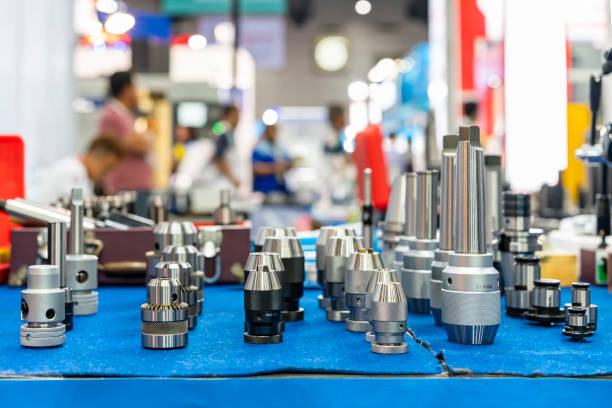
A CNC spindle, integral to the world of CNC machining, acts as the main rotational axis of the machine. This crucial component can be thought of as the heart of a CNC system, responsible for not just rotating the cutting tool, but also defining its operational parameters. While most people focus on the design, materials, or the type of CNC machine they are investing in, understanding the spindle can be equally paramount.
Every function from the tool's speed, its torque, and even the kind of cuts it makes, is determined by the spindle. When the spindle operates efficiently, it translates to a tool that cuts or mills the workpiece with heightened precision and effectiveness. Conversely, a malfunctioning or mismatched spindle can lead to less accurate results or even potential damage to the workpiece.
The vast landscape of CNC machining necessitates a variety of spindles to cater to different requirements. These spindles are primarily distinguished based on their design, power source, and intended application:
Belt-driven spindles: These spindles derive their power from an external motor connected via a belt. A noteworthy trait of belt-driven spindles is their relatively quieter operation, making them favorable for environments sensitive to noise. They excel in high-speed applications, though they sometimes might not provide as much torque as their counterparts.
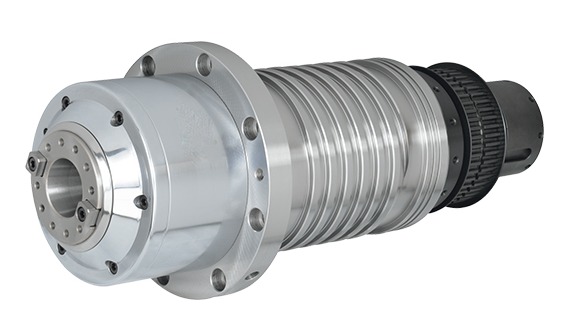
Motorized (or integrated) spindles: As the name suggests, these spindles come with motors integrated directly into their design. This integration results in spindles that can offer higher torque and superior precision. Their compact and streamlined design, devoid of external belts or additional components, makes them a top choice for demanding and intricate applications.
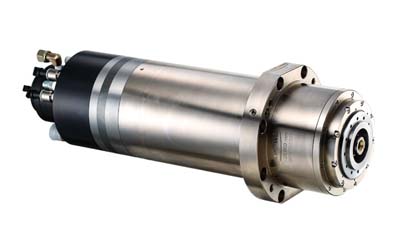
Gear-driven spindles: These spindles are built for power. They utilize gears to provide a high level of torque, especially at low speeds. This characteristic makes them indispensable for heavy-duty milling operations, where sheer power is more critical than speed. Their robust nature ensures that even tough materials can be machined with relative ease.
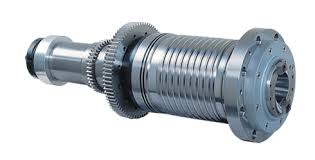
CNC machining's precision hinges largely on the correct spindle size. This pivotal decision can impact everything from production efficiency to the quality of the finished product. Determining the right spindle size goes beyond intuition; it's a systematic process that considers both the machine's capabilities and the intricacies of the workpiece.
In the realm of CNC machining, the selection of the correct spindle size is paramount for efficiency and precision. This choice is influenced by a host of factors ranging from the material type to the machine's compatibility. Let's dive deep into these factors to ensure that your CNC operations are optimal.
The nature of the material being machined significantly dictates the spindle size.
Harder Materials: When dealing with metals like steel or titanium, the resistance they offer requires a spindle that can deliver greater power and torque. These materials demand the sturdiness and resilience of a robust spindle to ensure precise cuts without unnecessary wear and tear.
Softer Materials: Contrarily, softer materials such as wood, plastics, or certain alloys don't always need the mightiest spindle. A smaller, less powerful spindle can machine these materials efficiently, ensuring the fine details are retained while optimizing power consumption.
The tools you plan to use in the machining process play a pivotal role in spindle selection.
Larger Tools: When working with larger cutting or milling tools, the spindle needs to support the tool's weight and the force exerted during operations. This necessitates a spindle that can handle increased loads and torque, ensuring that the tool operates seamlessly without faltering.
High-Force Tools: Some machining tasks, irrespective of tool size, demand higher forces. In such cases, a robust spindle, capable of delivering the needed torque without wavering, is a must. This ensures precision, speed, and longevity of both the tool and the spindle.
Every CNC machine is unique, and so are its requirements. It's imperative to understand that a one-size-fits-all approach doesn't work here.
Before zeroing in on a spindle, it's vital to check its compatibility with your CNC machine. A mismatch can lead to inefficiencies, machine damage, or even safety hazards.
Always cross-reference the spindle's specifications with your machine's guidelines, ensuring they align perfectly.
At the forefront of spindle size selection is the workpiece's size. Simplistically, the rule of thumb is: the larger the workpiece, the larger the spindle size required. This correlation stems from the need for stability during the machining process. A larger workpiece typically demands a bigger cutting or milling tool, which in turn requires a spindle capable of providing the necessary torque without compromising on precision. Ensuring that the spindle size matches the workpiece size not only guarantees stability but also minimizes potential errors and reduces the risk of tool breakage.
As you delve into the world of CNC machining, you'll encounter a range of spindle sizes, each tailored for specific tasks and workpiece requirements.
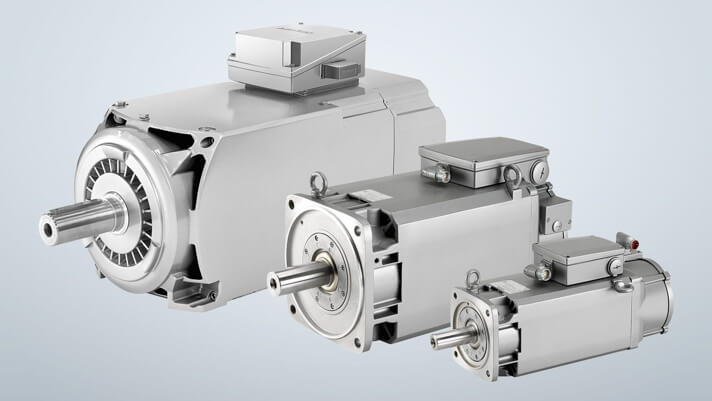
Often likened to the nimble artisans of the spindle world, mini spindles are crafted with an emphasis on precision. Specifically designed for tasks involving smaller workpieces, these spindles come into their own when meticulous detail is paramount. Their engineering leans heavily towards lightweight operations, meaning that every intricate design or delicate cut is executed with unparalleled precision. This finesse, however, comes with a trade-off. While they excel in precision tasks, mini spindles might not stand up to the rigors of heavy-duty operations. Their torque capacity is inherently limited, making them potentially unsuitable for tasks requiring substantial force.
If spindles were likened to personalities, mid-size spindles would be versatile polymaths. Aptly labeled the jack-of-all-trades in the spindle spectrum, they harmoniously merge torque with speed. This equilibrium ensures that they can comfortably handle a diverse range of applications. Whether you're working on a moderately large workpiece that requires substantial power or a piece that demands a delicate, nuanced approach, mid-size spindles are equipped to handle both with ease. Their adaptability makes them an indispensable asset in many CNC setups.
For those instances where size and force are the order of the day, large spindles step into the spotlight. Tailored for substantial workpieces and particularly demanding tasks, these spindles are the heavy lifters of the CNC world. Their design philosophy revolves around delivering unmatched power without sacrificing stability. This combination ensures that even the most challenging machining tasks are accomplished seamlessly. Whether it's carving through the toughest metals or maintaining stability during prolonged operations, large spindles rise to the occasion, ensuring materials, no matter how resilient, conform to their machinist's intent.
It's tempting to jump onto the latest spindle trend, but introspection is vital. Understand your project requirements, the materials you frequently work with, and the tools in your arsenal. A comprehensive analysis will guide you to the spindle that aligns with your operational needs.
While quality shouldn't be compromised, budgetary constraints are a reality. It's essential to find a balance between cost and performance. Investigate different spindle options, weighing their cost against their benefits, and opt for one that offers the best value for your investment.
Lastly, but most crucially, always cross-verify the spindle's specifications with your CNC machine. While some machines offer flexibility, others might have stringent spindle requirements. Consulting your machine's manual or reaching out to the manufacturer can provide clarity, ensuring a harmonious integration of the spindle.
Within the intricate ecosystem of CNC machining, the spindle undeniably emerges as its beating heart. This component, often overlooked in favor of more conspicuous machine parts, wields the power to profoundly influence the outcomes of your projects. Its size, far from being a mere technical detail, plays a pivotal role in determining the quality and efficiency of your machining processes.
Opting for a mini, mid-size, or large spindle isn't just about the scale of your operations. It's a calculated decision that should encompass various facets of your CNC needs. From the nature of materials and tools you work with, the nuances of your specific projects, to the ever-crucial budgetary considerations, every factor should weigh in on your spindle selection.
Moreover, ensuring that your chosen spindle is in harmony with your CNC machine's specifications is not just about compatibility. It's about extracting the maximum potential from your equipment, ensuring seamless operations, and prolonging the machine's life.
In essence, a thoughtful spindle choice is a testament to one's commitment to excellence in CNC machining. It guarantees not just efficiency and precision but also fosters a culture of longevity and sustainability in operations. Embrace informed decision-making, and your CNC endeavors will undoubtedly thrive.